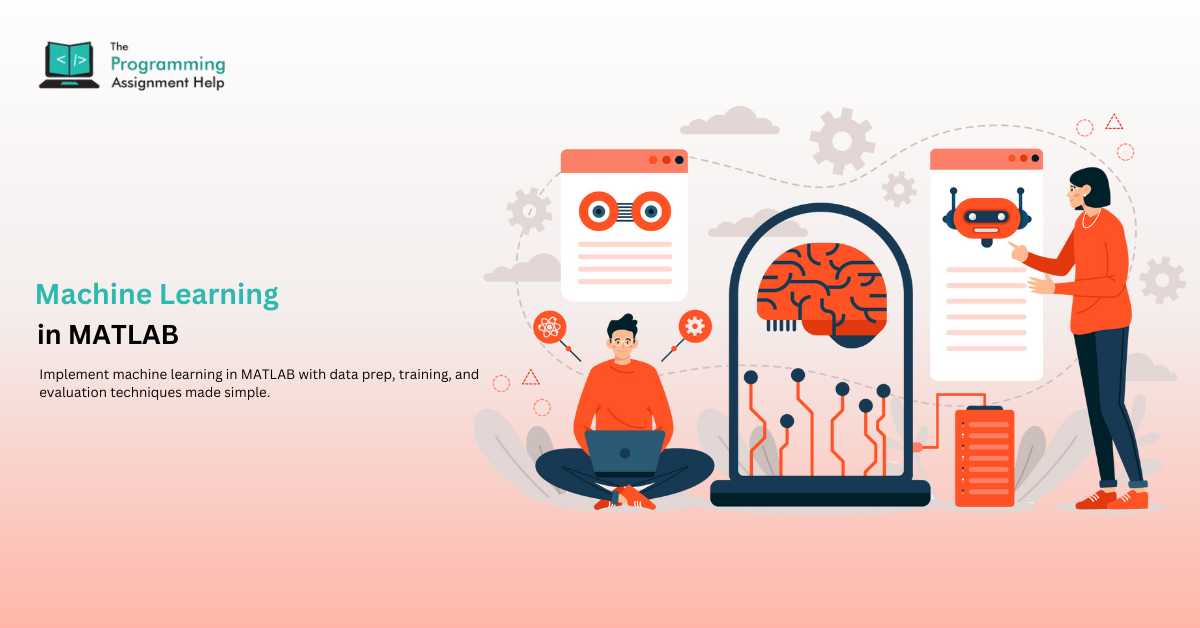
- 11th Sep 2025
- 22:47 pm
- Admin
Machine learning is an essential part of numerous technology innovations in the modern world. It embraces the use of image recognition, robotics, predictive analytics and natural language processing. Python usually gets a lot of the focus, although MATLAB remains a powerful platform to accomplish machine learning tasks. Its variety of toolboxes built-in tools, and simple ways to create visual outputs make it valuable. MATLAB helps researchers and students create model prototypes, test different algorithms, and roll out solutions with ease.
This blog will guide us through the steps towards implementing the machine learning projects in MATLAB.
Step 1: Preparing the Dataset
All machine learning projects start with data. MATLAB gives flexible options to either import and handle datasets based on CSV, Excel or SQL databases, or based on image/audio sources.
- Use readtable for tabular data.
- Use imageDatastore for image datasets.
- Use audioread for audio signals.
Example:
data = readtable('student_scores.csv');
Data cleaning is crucial. Functions like fillmissing, normalize, and categorical help prepare data for training.
Step 2: Splitting Data into Training and Testing Sets
In order to test the performance of the model, there should be train set and the test set of datasets. MATLAB simplifies this using its in-built functions.
Example:
cv = cvpartition(height(data),'HoldOut',0.3);
trainData = data(training(cv),:);
testData = data(test(cv),:);
This will mean that you train your model on one subset and test it on another to ensure that the results are unbiased.
Step 3: Selecting and Training a Model
MATLAB’s Statistics and Machine Learning Toolbox provides a wide range of algorithms, including:
- Classification: Decision trees, SVM, logistic regression.
- Regression: Linear regression, Gaussian process regression.
- Clustering: K-means, hierarchical clustering.
- Deep Learning: Neural networks using Deep Learning Toolbox.
Example (Decision Tree Classifier):
mdl = fitctree(trainData(:,1:end-1), trainData.Outcome);
Step 4: Evaluating Model Performance
After training the model it should be tested in terms of accuracy and reliability. MATLAB provides the performance metrics including accuracy, confusion matrices and ROC curves.
Example:
predictions = predict(mdl, testData(:,1:end-1));
cm = confusionmat(testData.Outcome, predictions);
This step aids you in realizing the extent to which your model performs on new data.
Step 5: Feature Engineering and Optimization
Good machine learning models depend heavily on the quality of features. MATLAB allows you to:
- Normalize and scale features.
- Reduce dimensionality using PCA (Principal Component Analysis).
- Optimize hyperparameters with fitcensemble or the Classification Learner app.
Step 6: Deployment and Applications
One of MATLAB’s biggest advantages is easy deployment. Trained models can be exported for use in:
- Embedded systems and IoT devices.
- Web or enterprise applications.
- Research and prototyping in academic projects.
With MATLAB Coder, models can even be converted into C/C++ code for faster implementation.
Best Practices for Machine Learning in MATLAB
Start with a simple model, then move to advanced techniques.
- Use cross-validation for reliable evaluation.
- Document your process with Live Scripts for better reporting.
- Leverage prebuilt apps like Classification Learner and Regression Learner for fast prototyping.
Conclusion
MATLAB makes machine learning projects easy, combining powerful toolboxes along with simple data preparation, training, and evaluation and deployment. With MATLAB, it is possible to build classifiers, regression systems, and deep learning systems, all in the same environment.
When you are doing a machine learning project, and require professional help, our MATLAB Assignment Help service can take you through the entire process so that your projects are both correct, effective and successful.








